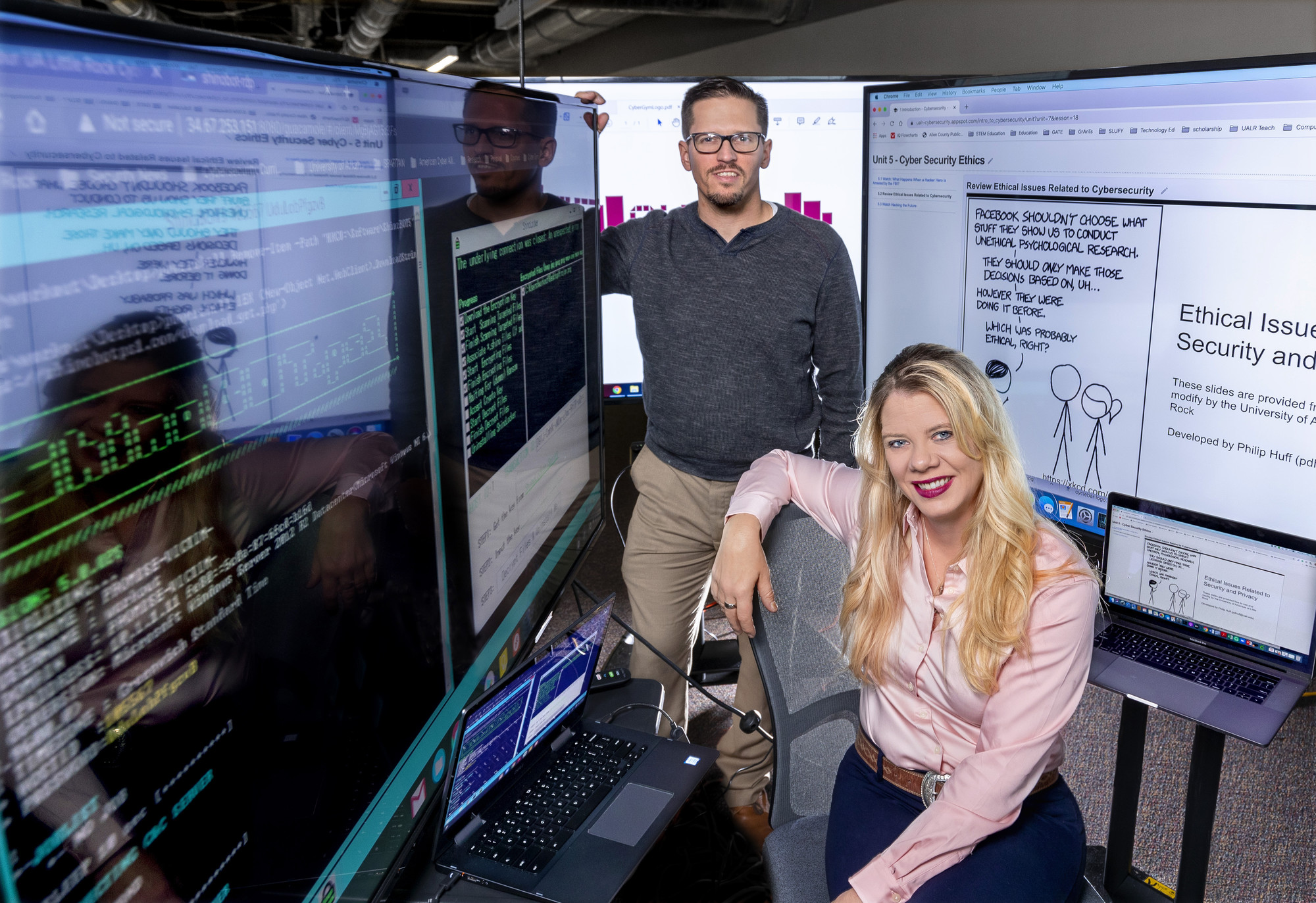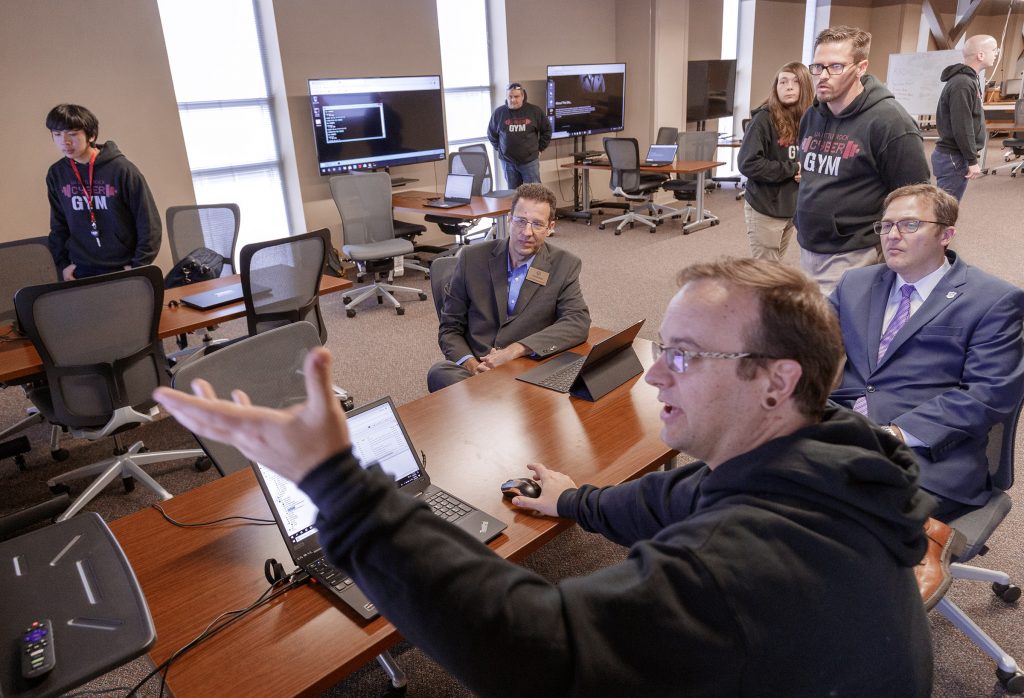UA Little Rock Cyber Gym dispatched in 80+ high schools in Arkansas

More than 450 students across over 80 high schools in Arkansas are learning about the in-demand field of cybersecurity through the University of Arkansas at Little Rock’s Cyber Gym.
“Cybersecurity learning is incorporated as a pathway in the state’s Computer Science initiative,” said Philip Huff, assistant professor of computer science and cybersecurity. “We provide an interactive environment for students to both walk through various cyber attacks and learn how to defend systems. It serves to both engage students in what they are learning and hopefully interest them in learning more. Our student researchers are very creative, which makes the workouts even more engaging. They aren’t just looking through logs. We have monkeys, snakes, detectives, and old Rick Astley songs to make the learning a little more fun.”
The UA Little Rock Cyber Gym, which provides cybersecurity education in the cloud, began offering a cybersecurity curriculum that is offered at no cost to schools and students. The Cyber Gym was developed this year as part of a partnership with the Arkansas Department of Education (ADE) Office of Computer Science, the Arch Ford Education Service Cooperative’s Virtual Arkansas division, and the University of Central Arkansas.
“This effort directly supports the governor’s programs for computer science and cybersecurity education. We’re proud the Cyber Gym is a teaching tool that is being used so effectively by high school students in Arkansas,” said Dr. Albert Baker, interim chair of the Department of Computer Science. “The level of usage of the Cyber Gym in this initial semester of use is a reflection of the excellent quality of the cloud-based software development that has been done by Philip and his team. The launch has been about as flawless as a software system launch can be.”
The curriculum supports teachers and students through the increasingly rigorous and relevant cybersecurity concepts, which will lead to more of the state’s students being prepared for industry recognized certifications and to enter post-secondary cybersecurity programs.
“Teachers have been very complementary and also helpful in making the Cyber Gym better,” Huff said. “The teacher of the largest virtual class with 200 students told us her students have really become engaged in cybersecurity. We don’t interact directly with the students, but I do get feedback when I’m out and someone sees the Cyber Gym shirt. I was able to recruit a student while I was picking up dinner when they noticed Cyber Gym on my facemask.”
The Cyber Gym is made possible through a partnership with the Arkansas Department of Education and Google as well as through a grant funded by the National Science Foundation. A grant from Google for the online lab environment gives the university the ability to run 2,000 distinct classroom labs a month for the 2020-2021 school year. The Cyber Gym utilizes a safe and highly accessible cloud environment that deploys workouts for students to build their skills in cybersecurity applications.

“While the students can learn a lot of concrete skills, such as basic cryptography or the mechanics of a DoS attack, I think the main takeaway is an enhanced awareness of cyber threats and the steps the individual can take to avoid those threats,” said Samuel Willis, a graduate student in computer science from Bryant. “With the firsthand experience offered by the workouts, we hope that students will develop a more intuitive understanding of cybersecurity principles.”
UA Little Rock student researchers are gaining valuable experience and cybersecurity skills by creating the lessons and workouts the high school students take in the Cyber Gym.
“I have learned a lot by working in the Cyber Gym,” said Andrew Bomberger, a senior computer science major from Hot Springs. “Starting out, I had limited knowledge and was lacking in critical thinking skills. Since then, I’ve noticed an improvement in almost all skill sets, such as a better understanding of programming, security, and even more confidence! You’ve heard the saying, ‘Experience is the best teacher?’ I feel I am a direct testament to that.”
In the Cyber Gym, Arkansas’s junior high and high school students are learning essential cybersecurity skills like programming, data analysis, cryptography, and how to defend against cyber attacks using popular tools like IDA, Autopsy, and Nessus. Following the completion of their lessons, the students put these skills to the test with workouts created by UA Little Rock students, which are often based on cybersecurity competitions they’ve competed in.
“They can expect to experience what a ransomware or phishing attack will look like and the general safety practices to follow up to help combat these attacks,” Bomberger said. “Since almost everything is tied to a computer nowadays, it’s imperative that users of all ages know how to protect themselves. The critical thinking skills could also expand past the digital realm as well.”
